When it comes to early education, gaps in understanding can occur quickly – and they can persist, even as a student ages. That’s why early intervention, including extra tutoring or one-on-one homework help, is so important for young learners who struggle with reading or math.
As a parent, you want to make sure your kids are prepared for success. But how do you find the right tutor for your elementary-age student? And how do you ensure your student is making progress?
At TutorUp, we connect you with certified, experienced teachers who specialize in working with students who are still “learning to learn.” Not only have our tutors gone through extensive background checks, but they also understand how to break down big concepts, make learning fun, and encourage students who struggle with motivation.
Here are five qualities you should look for in tutors who work with elementary students – and the questions you should ask your tutor right from the start.
1. Does your tutor have experience teaching or tutoring concepts in your student’s age range?
In elementary school math and reading, teachers tackle big concepts in manageable chunks, and each lesson builds on the last. There’s a big variation in content mastery between each year, too. For example, the way a kindergarten teacher tackles math concepts will look pretty different from the math concepts at work in a second-grade teacher’s classroom – but all the concepts in K-3 build on and reinforce one another.
Young learners who struggle with elementary school math and reading often get stuck on mastering the basic concepts they’ll need to build on later. Look for a tutor who understands how to teach the concepts for your student’s particular age group – and who can potentially look backward to help your student master a concept they might have struggled with in an earlier year.
Questions to ask your tutor:
- What kind of experience do you have teaching addition, subtraction, or multiples to students who struggle with these concepts?
- Tell me about a time you helped a student who struggled with learning to read. What did you do to help?
2. How does your tutor break down concepts for young learners?
If your elementary-age student needs more help tackling basic concepts in reading and math, it’s likely your teacher has already alerted you. Your teacher can be a great resource for your tutor, too, and can help your tutor understand which concepts need more practice and reinforcement.
“For tutoring to be effective, the tutor needs to have contact with the classroom teacher in order to discuss the current curriculum and classroom goals, teaching styles and practices, and gaps the teacher is seeing in the school,”
Shannon Keeny, a Baltimore-based private tutor, explained to PBS.org.
“The tutor should support the learning in the classroom by reteaching or accelerating,” she added. “The tutor becomes an advocate for the student’s learning for the school and a support for the parents.”
At TutorUp, we make it easy to put your tutor in contact with your student’s teacher to make tutoring sessions even more effective. This is especially important for elementary-age students who need more practice with basic concepts before they can tackle related or advanced concepts in reading and math.
Questions to ask your tutor:
- Tell me about a time you realized a student needed to back up and practice a concept from earlier in the curriculum, or the prior year’s instruction. How did you shift your tutoring plan?
- How would you work with a student’s teacher to determine which concepts need more practice or reinforcement?
3. What does your tutor do to help students who are tired, frustrated, or stuck?
Tutoring elementary school students requires a special kind of patience. Remember: your student just spent eight hours in a classroom, working hard or perhaps even feeling frustrated by not understanding some of the tasks in front of them. They’re ready to run around, be social, play, or just plain rest with Mom and Dad.
Your tutor will have to be patient enough to break down concepts for an elementary-age student and to deal with a waning attention span. While you want to encourage both your tutor and your student to set goals and get work done, understand that working in shorter bursts, taking breaks, and making it fun can all help make tutoring more effective in the long run.
Questions to ask your tutor:
- What do you do when you sense that your student might be struggling with a concept or hitting a wall?
- Tell me about a time you changed your teaching style to make sure a student understood the concept you were trying to teach.
4. How does your tutor make learning fun and engaging?
Elementary students are often curious and engaged in the learning process, especially when teachers incorporate song, physical objects, art, or movement. While your tutor might not feel comfortable breaking out a guitar and singing about multiples, they should have a plan for making tutoring time fun and engaging.
Look for tutors who have experience with project-based learning, learning games and technology, or creating math and reading-related art projects as a way to break up sessions solely focused on practice or drilling. Ideally, your tutor will find a balance between reinforcing concept mastery and encouraging playfulness that works best for you and your student.
Questions to ask your tutor:
- What experience do you have with project-based learning?
- How would you make one-on-one reading time or math practice more engaging?
- How do you engage physical, auditory, and/or visual learners?
5. What does your tutor do to encourage students who struggle?
Every student needs encouragement, especially if they’re spending extra time with a tutor or need one-on-one homework help. Look for tutors who understand what will feel like a big “win” for your student, especially as they begin to master concepts that will help them catch up with the rest of their classmates.
Just as you would ideally sit down with your tutor to establish tutoring goals, consider using learning-centered rewards, too. Maybe a 30-minute one-on-one reading session with a tutor earns your student a 20-minute break. Or maybe a positive tutoring report means your student gets to pick the next book for reading time based on their own interests and passions, rather than reading level.
Whatever form your tutor’s encouragement takes, make sure you’ve found someone who is sensitive to positive reinforcement, and who will work with you and your student to create the best possible environment for learning.
Questions to ask your tutor:
- How do you encourage students to keep trying even if they feel frustrated?
- What kinds of positive reinforcement do you use most often in your tutoring sessions?

